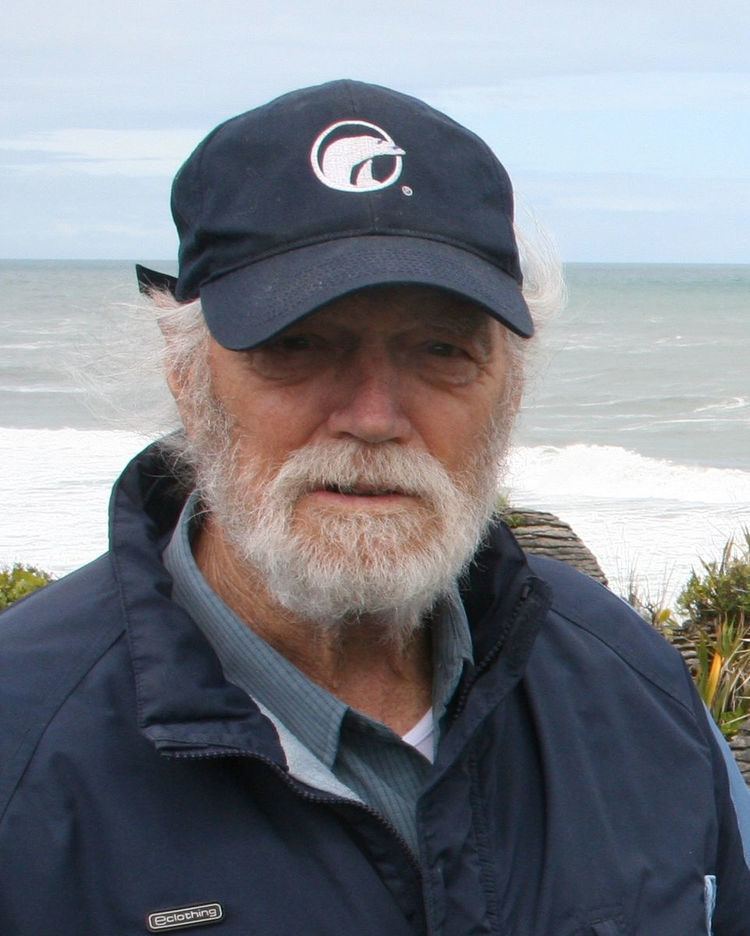Citizenship New Zealand Role Physicist | Name David Garner Nationality New Zealand | |
 | ||
Born 26 November 1928 (age 96) Wanganui, New Zealand ( 1928-11-26 ) Residence New Zealand, United States, Canada Institutions Department of Scientific and Industrial Research, New ZealandBedford Institute of OceanographyUniversity of Auckland Alma mater Victoria UniversityNew York University Education | ||
David McNiven Garner (26 November 1928 – 13 May 2016) was notable as a published research physicist, with a focus in physical oceanography and ocean circulation.
Contents

History
Dr. Garner attended New York University [1] from 1959 to 1962, where he graduated with a PhD in Physics on 22 October 1962. Dr. Garner returned to New Zealand in 1962, joining a team of scientists that founded the New Zealand Oceanographic Institute of the Department of Scientific and Industrial Research (today known as National Institute of Water and Atmospheric Research), then located in Hobson Street, Wellington, New Zealand.
Dr. Garner immigrated with his family to Canada in 1968, as a physical oceanographer in the ocean circulation department at the Bedford Institute of Oceanography [2] in Nova Scotia, Canada from February 1968 to July 1971, where his topics of research included effects around the Mid-Atlantic Ridge. He worked extensively on the oceanographic research vessels CSS Dawson and CSS Hudson (Canadian Scientific Ship, painted Survey Ship white, and run by the Bedford Institute of Oceanography), which today is the CCGS Hudson. His voyages included a portion of the first ever circumnavigation of North and South America by the CSS Hudson in 1970, on which he was a watch keeper, not a scientist.
David Garner returned with his family to New Zealand in 1971, where he was a senior lecturer at the University of Auckland [3] Physics Department [4] from approximately July 1971 to 1974, in Auckland, New Zealand. During his tenure, he worked on the physical oceanographic aspects of an ecological impact report by the university for Shell BP Todd Maui in their offshore drilling operations.
Scientific Publications
Personal
After leaving secondary school in 1946, David could not get into University because of a preference for World War II returned servicemen, so he got a job for a year (1946–47) on the Meteorological Sounding Team Canterbury Project on radar meteorology with the Department of Scientific and Industrial Research, based at the Ashburton Aerodrome. The New Zealand National Film Unit made a short film of the activities for its Weekly Review which showed in cinemas as a short subject. The film shows David getting into an Avro Anson, and working with a kite on the back of a truck, and a trawler.
David attended Stages I and II at Canterbury College, then moved to Wellington where he graduated BSc and MSc from the Victoria College of the University of New Zealand. After graduation David was employed doing sunspot research at the Carter Observatory in Kelburn, Wellington, from where he published his first scientific paper.
David Garner was the father of three children by Edna Jean Garner: including Mary Ann Garner, John David Garner and Steven James Garner. His wife was Kirsty Garner. David Garner died 13 May 2016.
